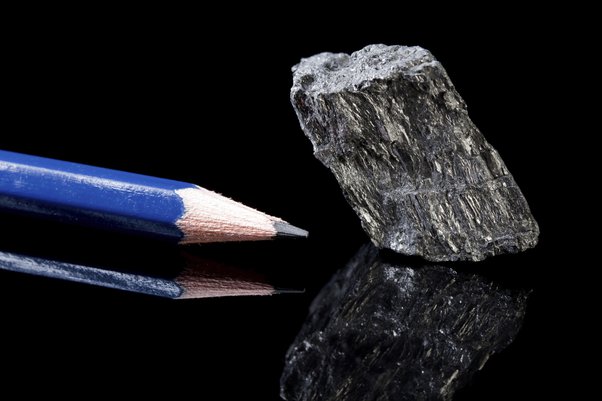
Introduction:
In the realm of writing instruments, the pencil stands as an enduring symbol of precision, versatility, and creativity. Central to its core functionality is the remarkable material known as graphite. This comprehensive article embarks on an exploration of graphite, unraveling its historical significance, the science behind its properties, the pencil manufacturing process, and its multifaceted role in the world of art, education, and industry.
I. Historical Journey of Graphite:
- Discovery and Early Uses: Graphite, a form of crystalline carbon, has a rich history dating back to the 16th century. It was first discovered in Borrowdale, England, and its unique properties were quickly recognized. Early users found that the material left a mark on surfaces, giving birth to the concept of writing with graphite.
- Early Graphite Instruments: Before the iconic pencil, graphite was employed in various ways, including marking sheep, lubricating machinery, and serving as a component in early scientific instruments. However, the transition to graphite as a writing tool was a pivotal moment in history.
II. The Science Behind Graphite:
- Crystal Structure: Graphite exhibits a hexagonal crystal structure, forming layers of carbon atoms. These layers have weak forces between them, allowing them to easily slide over one another. This characteristic contributes to graphite’s lubricating properties and its ability to leave a mark when applied to a surface.
- Conductivity and Lubrication: Graphite’s unique properties extend beyond writing. It is an excellent conductor of electricity due to the delocalized electrons within its structure. Additionally, the slippery nature of graphite layers makes it an effective dry lubricant, a quality exploited in various industrial applications.
III. Pencil Manufacturing Process:
- Mining and Refining: The journey of graphite pencils begins with the mining of natural graphite. After extraction, the graphite is refined to remove impurities. The quality of graphite significantly influences the characteristics of the pencil.
- Mixing with Clay: To create the core of the pencil, graphite is mixed with a precise proportion of clay. The clay acts as a binder and determines the hardness or softness of the pencil. Different grades of pencils are produced by varying the graphite-to-clay ratio.
- Extrusion and Drying: The graphite-clay mixture is extruded into the familiar cylindrical shape of a pencil core. After extrusion, the cores are dried to eliminate moisture, ensuring stability and preventing breakage during use.
- Encasing the Core: The dried pencil cores are encased in wood, typically cedar. The wooden casing provides structure, facilitates ease of sharpening, and protects the delicate graphite core. The encasing process involves cutting grooves to hold the core securely.
- Painting and Finishing: Once encased, pencils undergo painting and finishing processes. The outer wood is painted, and details such as branding, color-coding, and hardness indicators are added. The final step involves sealing the pencil to protect it from external elements.
IV. Grades of Pencils:
- Hardness Scale: Pencils are graded based on their hardness and darkness. The standard scale ranges from 9H (hard) to 9B (soft), with H indicating hardness and B indicating blackness. The middle of the scale (e.g., HB) is a general-purpose pencil.
- Specialty Pencils: In addition to the standard scale, specialty pencils exist, such as F (fine point), H and 2H (extra hard), and B and 2B (extra soft). Each grade serves specific purposes, catering to artists, engineers, writers, and various professionals.
V. Artistic and Creative Applications:
- Graphite in Art: Artists widely cherish graphite pencils for their versatility. From intricate sketches to detailed shading, graphite pencils offer a range of artistic possibilities. The ability to produce a spectrum of tones makes them an essential tool for artists across mediums.
- Technical and Industrial Drawing: Graphite’s precision and control make it indispensable in technical and industrial drawing. Engineers, architects, and designers utilize graphite pencils for drafting and illustrating intricate details with accuracy.
VI. Educational Significance:
- Primary Writing Tool: Graphite pencils play a foundational role in education. From early childhood to advanced studies, students use pencils for note-taking, drawing, problem-solving, and examinations. The ease of erasure and the ability to write with varying degrees of pressure contribute to their popularity.
- Standardized Testing: Pencils are the preferred writing tool for standardized testing globally. The graphite core’s ability to create easily scannable marks, coupled with the erasability factor, makes pencils the ideal choice for assessments.
VII. Environmental Considerations:
- Sustainable Practices: As environmental consciousness grows, pencil manufacturers are adopting sustainable practices. This includes responsibly sourcing wood, using recycled materials, and implementing eco-friendly production processes to minimize the ecological footprint of pencil manufacturing.
- Recyclability: Pencils, being composed of wood and graphite, are inherently recyclable. The wood casing can be repurposed, and the graphite core can be recycled into new pencil leads or used in other applications.
VIII. Future Innovations and Trends:
- Technological Integration: With advancements in technology, there is ongoing exploration of integrating graphite-based technologies into electronic devices, such as styluses for tablets. This convergence of traditional and digital tools showcases the enduring relevance of graphite in modern creativity.
- Sustainable Materials and Packaging: The future of pencil manufacturing is likely to witness a surge in sustainable materials and packaging. Innovations may include biodegradable casings, water-based paints, and further efforts to reduce the environmental impact of pencil production.
IX. Conclusion: Graphite’s Enduring Legacy
In conclusion, the graphite used in pencils is a marvel that spans centuries, continents, and creative endeavors. Its unique properties, from the crystal structure to its role in conductivity and lubrication, make it a material of unparalleled versatility. The pencil, with its humble graphite core encased in wood, has left an indelible mark on human expression, education, art, and industry. As we continue to evolve creatively and technologically, the enduring legacy of graphite in pencils remains a testament to the simplicity, precision, and boundless potential encapsulated in this remarkable writing instrument.